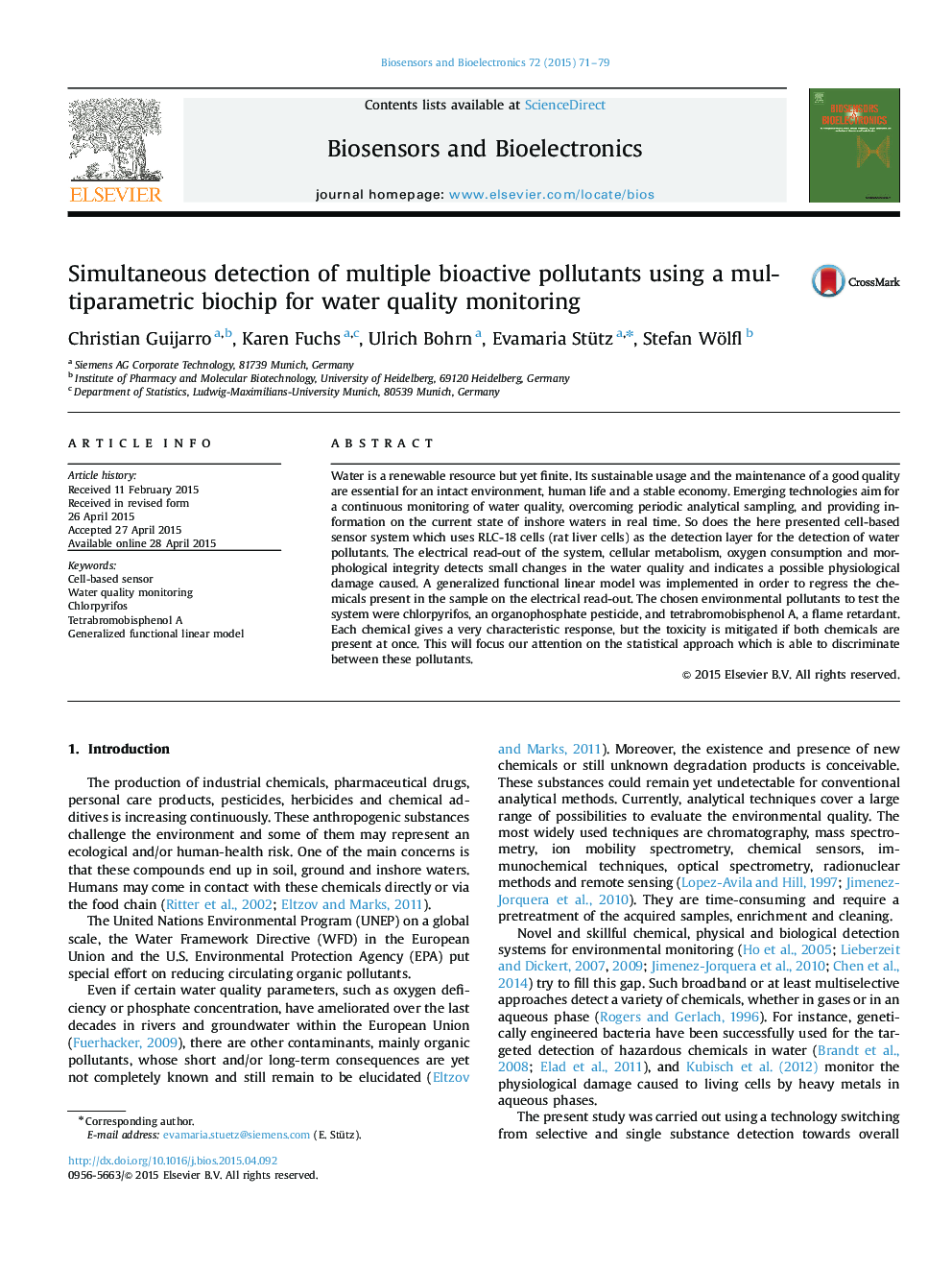| Article ID | Journal | Published Year | Pages | File Type |
|---|---|---|---|---|
| 866297 | Biosensors and Bioelectronics | 2015 | 9 Pages |
•Cell-based sensor detects physiological impairment caused by organic pollutants.•Concentration dependent decrease in the acidification and respiration rate.•Coexposure of industrial relevant substances can mitigate overall toxicity.•Stochastic model ascertains chemical A even if chemical B mitigates its effect.
Water is a renewable resource but yet finite. Its sustainable usage and the maintenance of a good quality are essential for an intact environment, human life and a stable economy. Emerging technologies aim for a continuous monitoring of water quality, overcoming periodic analytical sampling, and providing information on the current state of inshore waters in real time. So does the here presented cell-based sensor system which uses RLC-18 cells (rat liver cells) as the detection layer for the detection of water pollutants. The electrical read-out of the system, cellular metabolism, oxygen consumption and morphological integrity detects small changes in the water quality and indicates a possible physiological damage caused. A generalized functional linear model was implemented in order to regress the chemicals present in the sample on the electrical read-out. The chosen environmental pollutants to test the system were chlorpyrifos, an organophosphate pesticide, and tetrabromobisphenol A, a flame retardant. Each chemical gives a very characteristic response, but the toxicity is mitigated if both chemicals are present at once. This will focus our attention on the statistical approach which is able to discriminate between these pollutants.
